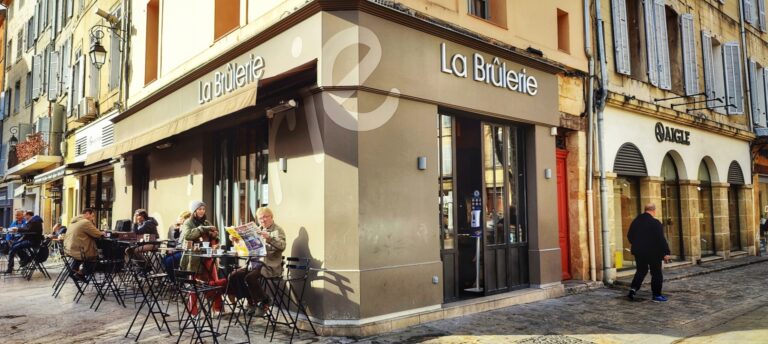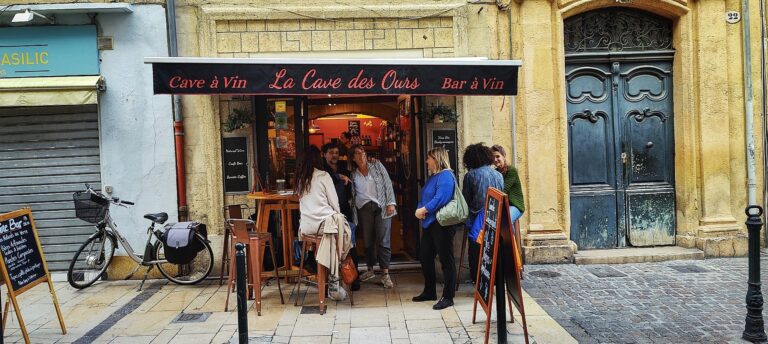A Brief History of Aix-en-Provence
Exploring the Fascinating History of Aix-en-Provence: From Ancient Times to Today
The history of Aix-en-Provence, a charming city located in the south of France, dates back more than two thousand years. From its beginnings as a Roman settlement in 123 BC to its current status as one of the most popular tourist destinations in the country, Aix-en-Provence has played an important role in French history.
Over the centuries, Aix-en-Provence was shaped by various rulers and dynasties, each leaving their mark on the town’s culture and architecture. Today, it is a popular destination for tourists and art enthusiasts, with its museums, galleries, and exhibitions showcasing the town’s rich history and artistic heritage.
This city has been home to some of the most influential people in French culture, including artists, writers, and politicians. In this article, we will explore the historical significance of Aix-en-Provence and its timeline throughout the centuries.
In this article explore some historical facts about Aix-en-Provence.
History of Aix-en-Provence before the 21st century:
The rich history of Provence
Aix-en-Provence is located in the region of Provence in southeastern France.
Provence is bordered by the Mediterranean Sea to the south, the Rhône River to the west and the Maritime Alps and the Italian border to the east. It has a rich history that spans thousands of years.
The region was inhabited by Celtic and Ligurian tribes in ancient times, and later by Greek colonizers who established the port of Massalia (today’s Marseille).

In the 2nd century BC, Provence came under Roman control, and became a prosperous region known for its agricultural production, including wine, olives, and lavender.
The name Provence comes from Provincia Romana or simply the Roman Province which was the name given by the ancient Romans to this region.
During the Middle Ages, Provence was ruled by various feudal lords, and was an important center of commerce and culture. It was also a site of conflict, with various wars and invasions by neighboring powers.
In the 13th century, Provence came under the rule of the House of Anjou through a royal marriage. King René was the last ruler of Provence before it became part of the Kingdom of France in the 15th century.
It continued to be an important cultural center, with artists such as painter Paul Cézanne and Vincent van Gogh drawn to its landscapes and vibrant colors.
The Roman era in Aix-en-Provence history
Aix-en-Provence was founded by the Romans in 123 BC, who called it Aquae Sextiae. The town quickly became an important center for commercial activity, with its strategic location on the Via Aurelia, or more precisely its branch: Via Julia Augusta.
The ancient Romans built many impressive structures in Aix-en-Provence, including a forum, thermal baths, and an amphitheater whose ruins were only discovered in 2004.
During the Roman era, Aix-en-Provence was also known for its natural springs, which were believed to have healing properties.
The Romans built thermal baths around the springs, which were used for bathing, relaxation and socializing.
Today, visitors can still see the remains of the Roman thermal baths, which have been preserved as a historic site on the grounds of a local spa called Thermes Sextius.

The Roman period of Aix-en-Provence, also known as Aquae Sextiae, was a significant time in the city’s history.
During this period, Aix-en-Provence became a flourishing Roman city, with grand buildings, public baths, and an extensive network of roads. The city’s prosperity attracted wealthy citizens and merchants.
The Roman period of Aix-en-Provence also saw the spread of Christianity, with the construction of early Christian basilicas and churches. In the 5th century, Aix-en-Provence became the seat of a bishopric, and the city’s religious significance continued to grow.
Today, many Roman structures in Aix-en-Provence are still visible, such as the remains of the Roman walls and the arches. These structures provide a glimpse into the city’s rich Roman history and attract visitors from around the world.
Aix-en-Provence history in the Middle Ages
After the fall of the Roman Empire, Aix-en-Provence fell under the control of various rulers, including the Visigoths and the Saracens. In later centuries during the Middle Ages, the town was captured by the Franks and Lombards and eventually became part of the Kingdom of Provence.
During the Middle Ages, Aix-en-Provence was a prosperous town, eventually becoming the capital of the region. The town also had a strong cultural scene, with many poets, musicians, and artists calling it home.
Aix-en-Provence was also home to many important religious institutions in the Middle Ages and beyond, including the Saint-Sauveur Cathedral and the Saint-Jean-de-Malte Church.
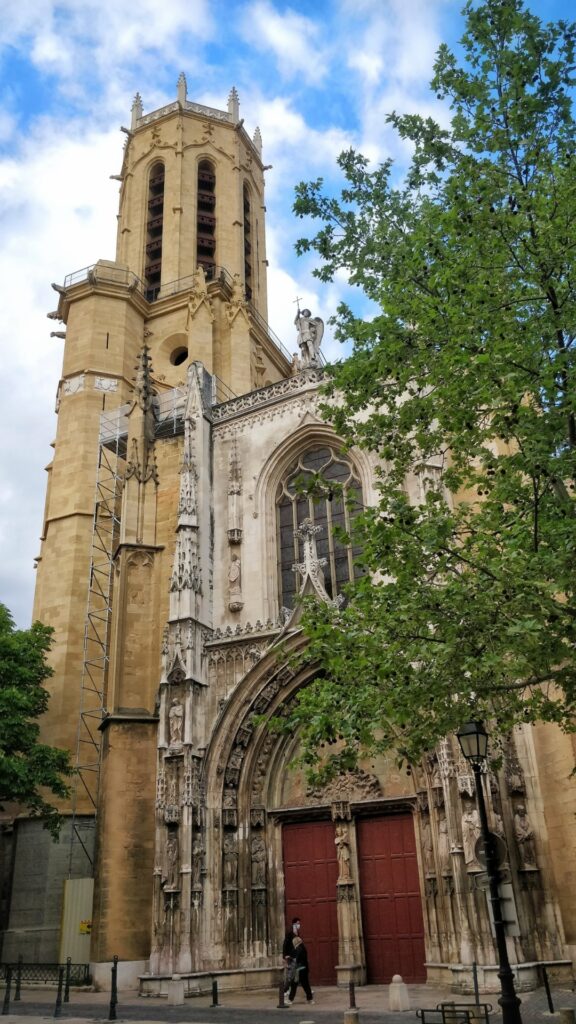
During the Middle Ages, Aix-en-Provence was a walled city with a castle, which served as the seat of the Counts of Provence.
Aix-en-Provence was also a center of learning during the Middle Ages, with a university founded in the town in 1409. The university attracted scholars from across Europe and was known for its programs in law, theology, and medicine.
Overall, the Middle Ages in Aix-en-Provence was a period of significant growth and development for the town, and its legacy can still be seen in the many historical landmarks and cultural institutions that continue to thrive in the region today.
The role of Renaissance in Aix-en-Provence history
In the 15th and 16th centuries, Aix-en-Provence went through a cultural and artistic rebirth. Many artists and intellectuals flocked to the town, drawn by its vibrant culture and natural beauty.
The town became a center for humanist study and was home to many important thinkers and writers. The city was home to many artists who contributed to the flourishing of the arts during this time.
During the Renaissance, Aix-en-Provence also underwent a period of architectural renewal. Several grand buildings were constructed, including the Hôtel de Ville (Town Hall).

One of the most notable people associated with the Renaissance in Aix-en-Provence was the painter Nicolas Froment. He is best known for his altarpiece, the Triptych “The Burning Bush”. The painting is now housed in the Cathédrale Saint-Sauveur d’Aix-en-Provence.
Overall, the Renaissance period in Aix-en-Provence was characterized by a vibrant cultural scene and a flourishing of the arts and humanities. The legacy of this period can still be seen today in the city’s architecture, art, and cultural traditions.
The 18th and 19th centuries in Aix-en-Provence
In the 18th century, Aix-en-Provence became a center for the arts, with numerous painters and sculptors calling it home.
The town also became known for its beautiful fountains, including the Fontaine de la Rotonde, which was built in the 19th century. The fountain is a popular tourist attraction and features statues of three female figures at its center, representing Justice, Agriculture and Fine Arts.
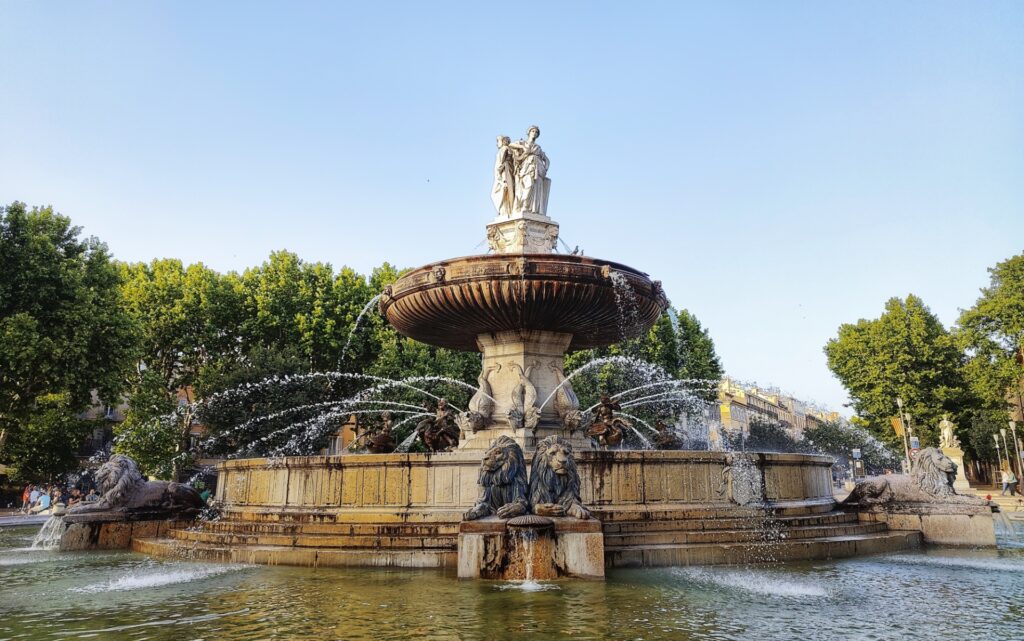
Aix-en-Provence was deeply impacted by the French Revolution that lasted from 1789 to 1799. It played a significant role in the revolution. In 1790, riots erupted that ended in a public hanging of three men on Cours Mirabeau including lawyer Jean Joseph Pierre Pascalis.
The revolution marked a period of political and social chaos, which challenged the traditional power structures of France and sought to establish a new system based on the principles of liberty, equality, and fraternity.
Another notable event was the adoption of a new constitution in 1791, which replaced the old feudal system and granted citizenship rights to all Frenchmen. This new constitution was celebrated in Aix-en-Provence with great enthusiasm.
Aix-en-Provence in the 20th century
In the 20th century, Aix-en-Provence continued to thrive as a cultural and artistic center. Many famous artists, writers, and musicians called the town home, including the painter Paul Cézanne.
Cézanne was born in Aix-en-Provence and spent much of his life there, painting many of his famous works in and around the town. His favorite muse was a local mountain called Sainte-Victoire which he painted around a hundred times.
During World War II, Aix-en-Provence was under the Vichy regime and was liberated by allied forces in 1944 via operation “Dragoon”.

After World War II, all of Provence underwent significant development and modernization, becoming a popular tourist destination known for its picturesque villages, stunning coastlines, and delicious cuisine.
Today, Aix and the entire region of Provence remain an important center of art, culture, and commerce in France.
Modern-day Aix-en-Provence
Today, Aix-en-Provence is a vibrant and cosmopolitan town, with a thriving cultural scene and a rich history. As a result there are many exciting things to do in Aix and the surrounding area.
The town is home to several museums, many galleries, and exhibitions, showcasing its artistic heritage.
Visitors can explore the town’s historic center, with its narrow streets and beautiful architecture. The town also has several beautiful gardens and parks, including the largest: Parc de la Torse, popular with the locals.
Aix-en-Provence is also known for its excellent cuisine, with many restaurants serving traditional Provençal and French dishes. Visitors can also sample the town’s famous rosé wine, which is produced in the nearby vineyards.
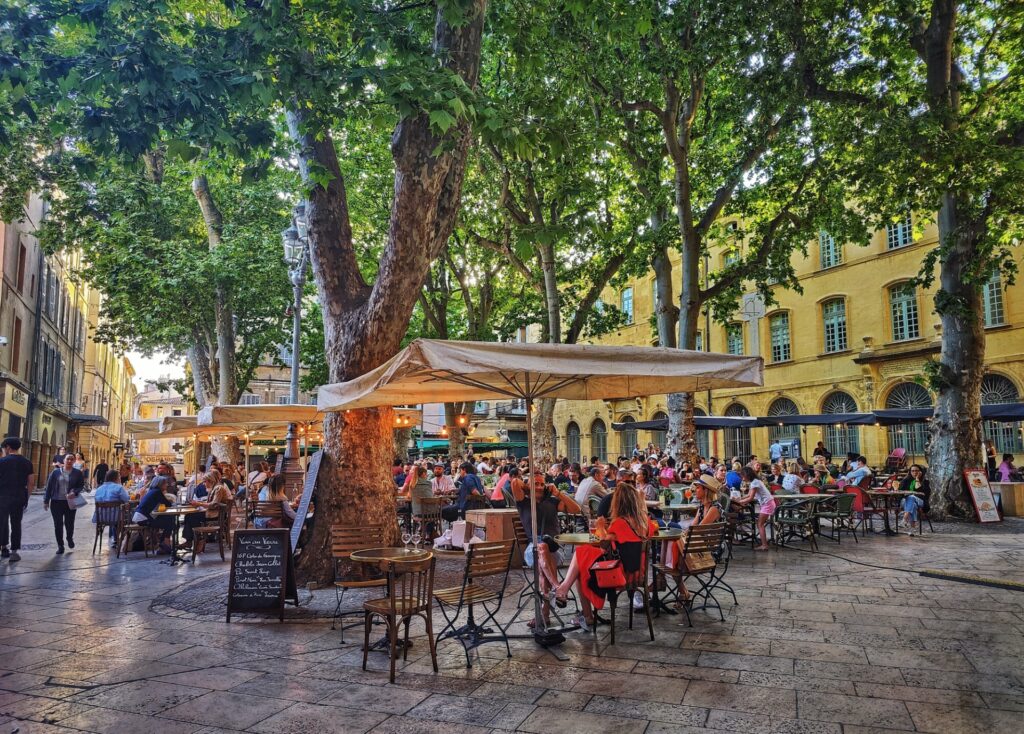
And nearby lavender fields attract many visitors during the months of June and July. Any time of the year you can purchase lavender products including dried flowers, essential oils and soap.
Because of its cosmopolitan flair and easy living, Aix has attracted a large and vibrant international community. Many expats from all over the world (and other parts of France) have set up home in Aix-en-Provence and the surrounding countryside.
Aix and the area are home to many excellent schools, both public and private, international and typically French. This is one of many reasons why international families love living here.
Famous landmarks and attractions in Aix-en-Provence
Aix-en-Provence is home to many famous landmarks and attractions, including the Saint-Sauveur Cathedral, the Saint-Jean-de-Malte Church, and the Archbishop’s Palace.
Visitors can also see the remains of the Roman thermal baths, which have been preserved on the grounds of Thermes Sextius.
The town also has many beautiful fountains, including the Fontaine de la Rotonde and the Fontaine des Quatre Dauphins and a multitude of others. Aix is often nicknamed the City of a Thousand Fountains.
Aix-en-Provence festivals and events
Aix-en-Provence is known for its many festivals and events, which celebrate the town’s rich cultural heritage. One of the most famous events is the Festival d’Aix-en-Provence, which takes place every summer and showcases some of the world’s best opera and classical music.
Throughout the year, many cultural, musical and sporting events take place in Aix-en-Provence. Not a week goes by without something exciting going on. Many of these experiences are free and open to the public.
And almost daily, somewhere in town there is a market happening, whether a farmer’s market, a craft, an antique or a flea market.
The town also hosts a popular Christmas market each year, where visitors can buy traditional Provençal crafts and food.
Aix-en-Provence cuisine and wine
Aix-en-Provence is known for its Provençal cuisine, which is often based on fresh, local ingredients and traditional recipes. Some of the more renowned dishes from the region of Provence include bouillabaisse (a typical soup from nearby port city of Marseille); pistou a delicious vegetable soup with basil and garlic, and countless others.
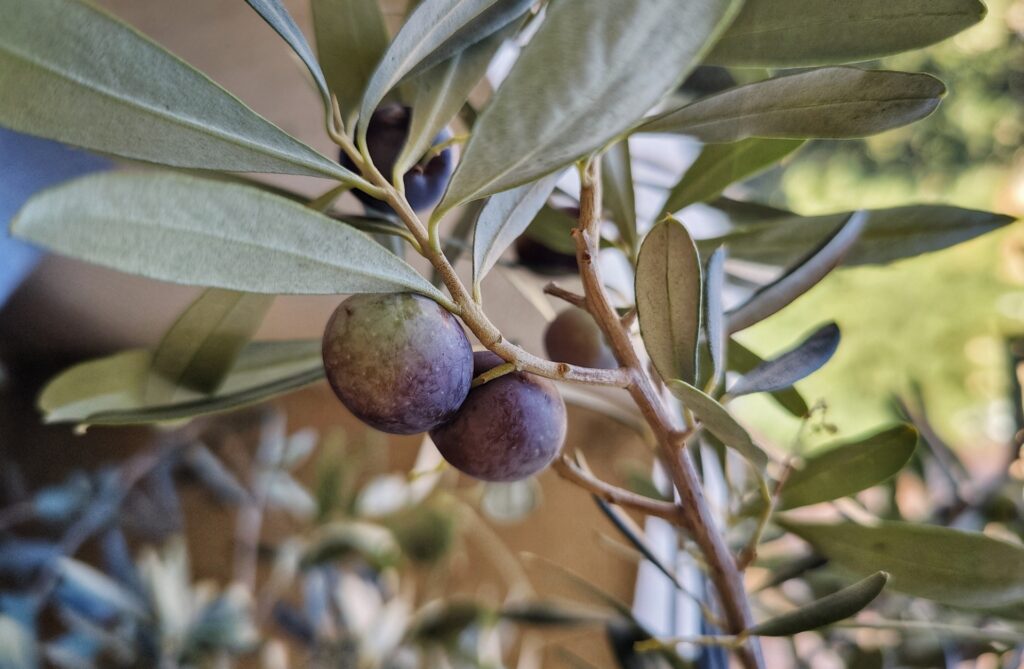
And because Provence is a producer of olives, Aix and the region are known for great olive oil, tapenade and other olive products.
The town is also known for its delicious pastries, such as the calisson, a sweet almond and candied fruit confection.
Fin
As you can see, Aix-en-Provence is a town with a rich history and a vibrant cultural scene. From its Roman origins to its Renaissance and modern-day cultural offerings, the town has something for everyone.
Its beautiful architecture, museums, and festivals make it a popular destination for tourists and art enthusiasts alike. Whether you’re interested in history, art, or cuisine, Aix-en-Provence is a town that is sure to delight and inspire.
So are you ready to book your visit to Aix-en-Provence and need perfect accommodations?
FAQ:
How old is Aix-en-Provence?
Aix-en-Provence is over two thousand years old. It was founded by Roman consul Sextius Calvinus in 123 BC.
What is the population of Aix-en-Provence?
The population of Aix-en-Provence is roughly 145 000 people.
What does the name Aix-en-Provence mean?
The name Aix-en-Provence means “waters in the Roman Province” and comes from the original Latin name given to the city by the Romans. The original name was Aquae Sextiae or “waters of Sextius” after the Roman consul who founded the city.
What other names has Aix-en-Provence been known by?
Aix-en-Provence is also known as Ais de Provença in the Provençal language or Ais de Prouvènço in the Mistralian norm of the Occitan language. The ancient Roman who founded the city called it Aquae Sextiae. Inhabitants of Aix-en-Provence simply refer to it as Aix.
What do you call the inhabitants of Aix-en-Provence?
The inhabitants of Aix are called “aixois” (m.) or “aixoises”(f.) in French. The less common variant is “les Aquisextains”. In the local provencal language they are called “lei sestian”.
How to pronounce Aix-en-Provence?
Aix-en-Provence is pronounced: [ɛksɑ̃ pʁɔvɑ̃s] using the French phonetic alphabet.
What language is spoken in Aix-en-Provence?
French is the language of Aix-en-Provence. Some people still speak the traditional regional language called Provençal, which is a variety of the Occitan language.




